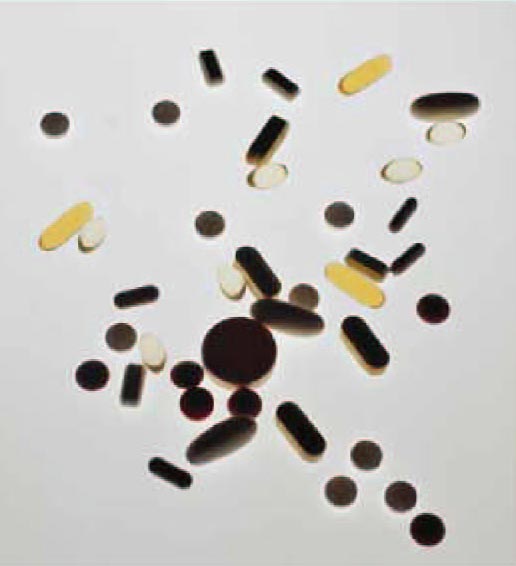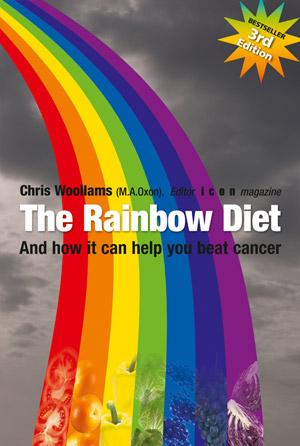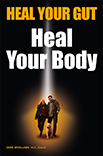Patient-friendly overview of lung cancer; the types of lung cancer, the causes of lung cancer and orthodox and complementary lung cancer therapies, including alternative lung cancer therapies and immunotherapy.
Lung cancer, types, symptoms, causes and alternative treatments
This lung cancer overview of research facts and information will help you increase your personal odds of survival. We cover the symptoms, the diagnosis, the possible causes and the latest options on lung cancer treatments and therapies - from lung cancer drugs, chemotherapy and immunotherapy, to surgery, radiotherapy and complementary therapies; including all the very latest alternative lung cancer treatments and new therapies and research on lung cancer. We will even cover the types of lung cancer, and lung cancer prevention.
You can also Go to: Lung cancer - Latest News, Latest Research
Lung cancer rates are still growing
Lung cancer is still the UK Number 1 cancer and, despite huge efforts to reduce smoking and asbestos, it is still growing. Perhaps this is because the fastest growing area of lung cancer is non-small cell lung cancer (NSCLC) adenocarcinoma and most cases don't require you to be a smoker to develop it, as we will see.
In America, more women than men develop lung cancer. More women die from lung cancer than breast cancer. The orthodox medical therapies seem numerous, but have really been quite limited in success until recently. Perhaps this is why more and more patients are turning to both complementary lung cancer therapies, and alternative lung cancer treatments.
At the bottom of this article we will guide you through our website looking at alternative ways to help yourself increase your personal odds of survival.
 Want to receive the very latest news and information on this subject? Click here
Want to receive the very latest news and information on this subject? Click here
With CANCERactive you get so much more to increase your chances of beating your cancer.
Symptoms of lung cancer
Diagnosing Lung cancer early is extremely important to outcome.
The main symptoms to look for are:
-
Chest infections that won't go away, even with antibiotics
-
A cough for more than 3 weeks
-
Coughing up blood
-
Feeling more tired than usual
-
Feeling very out of breath
-
Losing your voice - but no sore throat
-
Chest pains
-
Losing weight but not sure why
Causes of lung cancer
There are several different types of lung cancer. Rarely does one single factor (even smoking) cause lung cancer.
Smoking is primarily linked with small cell lung cancer; and with squamous cell, non-small cell lung cancer.
However smoking has has little or nothing to do with other rapidly growing areas of non-small cell lung cancer (NSCLC)!
 Just over a third of all lung cancers develop in people who have never been exposed to smoke
Just over a third of all lung cancers develop in people who have never been exposed to smoke
Canadian research from Princess Margaret Hospital, Toronto and covered in Cancer Watch was quite clear: Just over a third of all lung cancers develop in people who have never been exposed to smoke. They don't smoke, never did, don't frequent places filled with smoke, nor have a family member who smokes. "Many of these people are young and female", said lead researcher Dr Matasha Leighl.
This has been confirmed by studies in California where researchers feel it is extremely likely that a combination of environmental hormone disrupters (xenoestrogens) plus an increasing level of airborne pollutants are now behind the lung cancer increases.
Most non-small cell lung cancer adenocarcinoma is linked to EGFR (Epidermal Growth Factor). EGFR is a tyrosine kinase protein and this is linked to reduced survival, increased lymph node metastases and poor chemo-sensitivity. However new drugs are targeting tyrosine kinase. Importantly, there is a strong interplay between estrogen, its receptors and EGFR. Several studies show there is croos talk between estrogen receptors and EGFR receptors in many cancers.
We have a simple book on what exactly you can do for yourself to cut your oestrogen levels.
 Go to: Oestrogen the killer in our midst
Go to: Oestrogen the killer in our midst
Researchers have pointed the finger at oestrogen (estrogen) mimics - chemicals that are commonly found in our homes, and in personal care and toiletry products that once inside our bodies mimic the action of aggressive oestrogen and cause their havoc. Certainly Boston University Medical School have shown how environmental chemicals affect receptor sites on cells and how cancer cells have 50 times more such receptors than healthy cells.
You can cut many of these products out of your life. You can cut human oestrogen levels and you can et to manage your oestrogen levels.
Go to: 10 ways to cut estrogen levels naturally
Gut-lung Axis
A fascinating development took place with the discovery of the Gut-Lung Axis. The discovery of a microbiome in the lungs and respiratory tract, was followed by discoveries on the links between the gut microbiome and the lung microbiome. Formation and progression of lung diseases such as asthma, pulmonary disease and cystic fibrosis have been linked to imbalances of commensal bacteria and pathogens in the gut. Both the gut and lung microbiota influene the immunological response in the lungs. It's early days yet, but it is likely that pathogens in the respiratory tract will explain why so many non-smokers now develop the disease. Certainly it is known that antibiotic use early in life is linked with a seven fold increased risk of asthma by the age of 8.
It has already been shown that approximately 17% of lung cancer patients have pathogens, and a past infection such as pneumonia seems likely to play a part.
It is something you should look to tackle. Unfortunately, cancer treatments can make matters worse. After chemotherapy, 59% of patients with neutropenia were shown to have gram-negative pathogens; after surgery, the risk is not just gram-negative pathogens but the antibiotics see 75% of patients with candida albicans infection. You need to fix this!
Go to: Heal your Gut - Heal your Body
No single cause of lung cancer
Our attitude to cancer at this charity is that rarely does any one single factor cause a cancer. Whilst we were extremely happy to see smoking banned in public places, our view is that it is more likely that combinations of factors cause cancer.
For example, smokers with prior damage to the lung microbiome are more likely to develop lung cancer. And smokers who have a higher consumption of saturated fats increase their risk of lung cancer - but consumption of good fats (like extra virgin olive oil) decreases risk. Just a 5 per cent switch from saturated fat to good fat reduced risk by 17%.
Go to: Saturated fat consumption increases smokers risk of lung cancer
You build cancer over a six to ten-year period, sometimes longer, by developing a body that is conducive to cancer rather than being conducive to health. The Science of Epigenetics teaches us that problems occur through factors such as:
* Environmental toxins (including smoking)
* Poor Diet
* Hormones such as estrogen or Thyroxin
* Stress
* Poor microbiome
So let's look at some of these possible lung cancer causes and contributing factors:
1. Yes, Smoking is a risk factor, as is passive smoking. In particular, smoking is linked to Squamous cell NSCLC. Worse, for females the lung cancer factor seems to be carried on the X chromosome and females have two to a males one. Research indicated in 2003, that women thus had twice the risk as men from identical levels of secondary smoke. There is a decline in male cancers, but an increase in female cancers. In America, the American lung Association states that Smoking contributes to 80 to 90 per cent of lung cancer deaths in men and women. Men who smoke are 23 times more likely to develop lung cancer. Women are 13 times more likely than never smokers.
2. And theres Asbestos. Weve all heard about asbestos in the work place. This can have a direct effect on the cells of the lung tissues. (We have a separate section on mesothelioma.) But asbestos can be linked to ..
3. Talcum Powder: Not for nothing is there a warning on certain baby packs saying, Do not use near your babys nose or mouth. Linked to ovarian cancer with several very large court settlements for damages, talcum powder is also the main constituent of some face packs, powder puffs, mascaras etc. This is a good example of Environmental Toxins in the home. And the evidence is convincing - not just to expert scientists, but to a jury in a New Jersey court which, in April 2018, awarded $117 million to a husband and wife who claimed talcum powder caused their lung cancer.
4. Radon: Rarely mentioned in UK cancer reports, in the USA they believe this gas which bubbles up through the floor of houses that are over rocks containing uranium, accounts for as much as 26 per cent of all lung cancers. There are definitely regions in the UK where this is more prevalent (e.g. The West Country) and you can have your house checked out by the National Radiological Protection Agency if you are concerned.
 Radon may account for 26% of lung cancers
Radon may account for 26% of lung cancers
5. Diesel Fumes: Like Radon the dangerous elements are particulate and stick to dust particles, which you then breathe. Once inside your lungs they are very hard to oust. Again US cancer charities talk about 23 per cent of all lung cancers forming in this way. Of most concern is that smoking, plus radon, plus diesel fumes seem to multiply up, two or three concurrent factors greatly increasing risk. Certainly people living near main roads in dense traffic areas seem to have higher risk.
 Diesel fumes may account for 23% of lung cancers
Diesel fumes may account for 23% of lung cancers
6. Formaldehyde: There are numerous studies on the toxicity of this chemical - IARC and The National Toxicology Program in America have labelled it a human carcinogen. You can find higher levels in older houses that have urea-formaldehyde foam insulation or wood chip (it comes from the glues used), and from glues used under some carpet and ceiling tiles. Worryingly, many personal care products contain it. It can be called by a variety of names and has a number of similar, closely related cousins in all about 40. It is found in shampoos and nail polishes for example, though not in Sweden and Japan where it is banned.
7. Arsenic: June 12 Issue of the Journal of The National Cancer Institute reports that high levels of Arsenic found in contaminated water, can result in increased risk ten years or more after consumption. But they could have reported on other heavy metals like chromium. There have been a number of incidences worldwide where heavy metal contamination by factories in local water supplies has resulted in increases in lung cancer.
8. Oestrogen: US research in 2004 and covered in Cancer Watch showed that certain types of lung cancer were fuelled by oestrogen, (estrogen) - particularly oestradiol (estradiol) made by aromatase enzymes in the fat stores in the body - or even oestrogen mimics (Xenoestrogens) from all manner of everyday chemicals. Contrary to urban mythology, research conducted by various groups including the US Cancer Prevention Coalition has shown that by far the biggest concentration of such chemical pollutants is not in the center of cities but actually inside your own home. Cleaning agents, personal products, toiletries, plastic bottles and pesticides are likely culprits. (See our feature article: As safe as Houses). The World Health Organisation in 2013 called on all Governments to ban all BPA, phthalates and parabens. Synthetic oestrogen supplements (like HRT) may also heighten risk. Being overweight will also  increase natural oestrogen levels in the body. Some foods like broccoli (Indole 3 Carbinol) will help denature oestradiol, others will hinder and you should read both Pillar II and Pillar III of the causes of cancer to understand more. Many lung cancers are EGFR and this is known to have cross talk with estrogen receptors.
increase natural oestrogen levels in the body. Some foods like broccoli (Indole 3 Carbinol) will help denature oestradiol, others will hinder and you should read both Pillar II and Pillar III of the causes of cancer to understand more. Many lung cancers are EGFR and this is known to have cross talk with estrogen receptors.
Go to Estrogen and non-small cell lung cancer
9. Tuberculosis: There is some evidence that there is an increased risk amongst people who have had TB especially in areas of the lung where there is scar tissue.
10. Hereditary links: Recent research, showing that families of smokers had a 70 per cent risk rather than a more normal individual increased risk of 30-40 per cent, has fueled the idea that some families carry a lung cancer gene. This risk seems slight.
11. X-Rays: There is quite a lot of evidence (for example, from women with breast cancer who had radiotherapy treatment) that X-rays to the chest region can play a part in causing lung cancer. Indeed we have seen several women who had radiotherapy for a breast cancer, and this caused a new primary over ten years later - in all cases they developed a primary squamous lung cancer. They had all smoked for a decade, but not for 20 years or more.
Kick out the drivers:
Now, the important point is that we are not listing the possible contributory factors so that you dwell on things that have happened in the past. We want you to understand what factors might still be present in your life and might be contributing to the maintenance of your cancer. Then you can formulate an action plan.
For example, there are ways you can reduce damage caused by environmental toxins, some people use selenium, or complex compounds like indole 3 carbonic and chlorella that can help you eliminate heavy metals. Or you can act to lower the oestrogen (natural and synthetic) in your life; and you can eliminate Candida and pathogens that might lie in your lung microbiome. You can find out comprehensive information on these topics and more elsewhere on this Website.
Confused by it all? Would you like Chris Woollams to build you a personal programme? Here's what people who have them say -
Go to: Personal Programmes - feedback and comments
Types of lung cancer
Lung cancer is a cancer that forms in tissues of the lung, usually in the cells lining the air passages. Primary Lung cancer was originally categorized simply by the size of cell - small or non-small! There are several types:
i) Small Cell lung cancer (SCLC)
About 20 per cent of all lung cancers, (sometimes called oat cell lung cancer, because the shape of the cell looked like oats). A two-stage system describes the spread:
1. Limited, meaning the cancer is confined to a portion of the chest where it originated, or
2. Extensive, meaning the cancer has spread throughout the lung or into the lymph nodes, or even out from the chest area.
This cancer can spread very quickly largely due to the high levels of a protein, Ki-67. In many cases, cancer cells have already spread to other parts of the body when the disease is diagnosed. This rapid spread limits the treatment options. This cancer is particularly linked to smoking.
ii) Non-small cell lung cancer (NSCLC)
Non-small cell lung cancer has grown rapidly. NSCLC is subdivided into several categories and Squamous is usually viewed as the one most linked to cigarette smoke. There are three sub-groups determined by the type of cell found in each case:
-
Squamous cell carcinoma (also called epidermoid carcinoma)
-
Adenocarcinoma
-
Large cell carcinoma
iii) Mesothelioma
Some charities like to say that this is now an increasingly rare cancer. On researching this form of the disease in detail, we found evidence that the disease is yet to peak. The disease is found in the chest and abdominal lining. Sadly, it mainly affects people who have had occupational exposure to asbestos particles. We have covered this cancer in a separate section on this website
Go to: Mesothelioma lung cancer
iv) Secondary lung cancer
There is a fourth type of lung cancer which is a SECONDARY from a primary cancer elsewhere. This may not be governed by the classifications above. It is a metastasis from the breast, colon or prostate cancer (for example) and is better categorised by its origins. Often it first appears as nodules in the lungs. It can remain in that form for many years without further growth.
Lung cancer treatment - options
Stages
Lung cancer is described using four stages:
-
stage I The cancer is confined to the lung;
-
stages II and III. The cancer is confined to the chest;
-
stage IV. The cancer has spread from the chest.
Treatment options for lung cancer
A number of factors govern the actual treatment chosen, For example, the type of lung cancer (non-small or small cell lung cancer), its location, size, and extent of the tumour. The general strength and health of the patient is also a factor. But the most important factor is how early the cancer is diagnosed. For 80 per cent of patients, surgery is not an option because the cancer has been diagnosed so late.
Broadly the orthodox lung cancer treatment falls under 3 headings:
1. Surgery: may be used to remove a part of the lung (a resection), or an entire lobe (a lobectomy). Sometimes the surgeon will remove lymph nodes in the chest. On occasion surgery is simply not an option because of the size and/or location of the tumour and/or the patients general state of health.
2. Radiotherapy: may be used before surgery in an attempt to shrink a tumour, or after surgery to attempt to destroy remaining cancer cells. It may also be used with chemotherapy as primary treatment instead of surgery or even to relieve symptoms such as shortness of breath. Most usually external radiation is used but occasionally implants may be suggested.
3. Chemotherapy:
3.1 Standard chemotherapy depends on the type of lung cancer and how much it has spread. Etoposide may be used for small cell lung cancer; you can find more in our patient-friendly A-Z review of cancer drugs
Chemotherapy also varies by country. In the USA, Carboplatin and Abraxane (an albumen-bound form of taxol) are used for advanced forms of NSCLC, for example.
3.2 Targeted drugs are ever more sophisticated. They may be used to stop the growth of the tumour and to kill all cancer cells, whether they remain in the lung or are outside. Some now target the blood supplies of the tumour. Avastin (Bevacizumab) is a monoclonal antibody which targets Vascular Epithelial Growth Factor (VEGF), for example. A whole raft of new drugs have been launched in the last few years - these include, Afatinib, Ceritinib, Crizotinib, Erlotinib, Ramucirumab.
 3.3 Immunotherapy is bringing positive results to lung cancer treatment. For example Keytruda (pembrolizumab) has been shown to extend survival times in non-squamous NSCLC. It is a check point inhibitor, a PD-1. Nivolumab (Opdivo) is another and used in NSCLC where platinum based drugs have failed.
3.3 Immunotherapy is bringing positive results to lung cancer treatment. For example Keytruda (pembrolizumab) has been shown to extend survival times in non-squamous NSCLC. It is a check point inhibitor, a PD-1. Nivolumab (Opdivo) is another and used in NSCLC where platinum based drugs have failed.
For information on standard Cancer Drugs and chemotherapy click here. Most drugs are administered orally or via a tube into a vein in the arm (a catheter). The biggest problem is that lung cancer cells develop long-term resistance to chemotherapy drugs. Researchers have also found that cells with high levels of two proteins FGF-1 and S6K2 are more resistant to drugs in the first place.
The treatment of lung cancer is becoming ever more complex. One patient in the UK, with an EGFR mutation for her adenocarcinoma NSCLC, was told in writing that she had three options - 4 rounds of carboplatin/pemetrexed; an immunotherapy such as a PD-1 like Opdivo (Nivolumab) or Keytruda (Pembrolizumab): or a TKI (tyrosine Kinase Inhibitor) such as Afatinib (Gilotrif).
There are even approved drugs for EGFR PD-L1 mutations, such as Atezolizumab and Durvalumab.
The world waits!
Alternative Lung Cancer treatments; Complementary lung cancer treatments
There's an increasingly blurred line between complementary and alternative cancer therapies; anyway, at CANCERactive we believe the issue is to build an Integrative cancer treatment programme using the best of the best to increase your personal odds of survival. Lets look at some options.
"Why not have a chat with Chris Woollams? He can help you take more control over your treatment programme, tailored to you and your cancer. Its called a Personal Prescription"
Go to: Personal prescriptions

1. Radiofrequency Ablation: More and more used where the tumours are little more than spots (more common in secondary lung cancer) and/or where the tumours are on the surface of the lungs. Still in its infancy in the UK and much more commonly used in the USA and Europe. It could be a safe and feasible alternative for those patients with Non-small cell lung cancer according to Professor S Batra of UCLA San Francisco.
Go to: Ablation, localised hyperthermia, HIFU
2. Photodynamic therapy (PDT) Increasingly popular in the USA, it is now making a mark to in the UK as better photosensitive agents and lasers are being developed. Former UK cancer tzar Professor Mike Richards asked for more funds to be directed towards this non-invasive treatment, but the finished article seems quite a way off. It is much more a mainstream option in the USA than the UK, even though it now reasonably well established and the new agents have low side effects. According to the FDA in America, PDT may also enhance the immune system against the cancer. There are a number of studies on PDT and lung cancer from the USA to Japan (See - https://www.ncbi.nlm.nih.gov/pubmed/17409904)
Go to: Photodynamic Therapy (PDT)
3. Cryosurgery, or cryoablation: Can be used with NSCLC where the disease is not suitable for resection. Cryosurgery involves tissue being frozen to destroy abnormal cells. This is usually done with a special instrument that contains liquid nitrogen or liquid carbon dioxide. According to an overview (https://www.ncbi.nlm.nih.gov/pmc/articles/PMC3426750/) there can be numerous side effects but it can extend life.
4. Lung cancer vaccines: Cuba launched CIMAvax, the worlds first lung cancer vaccine back in 2011 and it only costs $1 per dose. It is called CIMAvax, there are many cases of it extending life, you just have to go to Cuba to get it.
Go to: CIMAvax and lung cancer from Cuba
5. Intravenous Vitamin C: The use of IVC has long been controversial. After Linus Pauling used vitamin C to load up cancer cells with free-radical oxygen, others failed to replicate his work by using oral doses. Since the body rejects the ingestion of more than about 4.5 gm of vitamin C, this was chalk and cheese. Now researchers at Ohio Medical School are in the middle of full 3 phase clinical trials. They have reached Phase 2 and IVC clearly increases survival times in NSCLC. Only by Phase 3 will we know by how much. They are treating Lung Cancer and glioma in their clinical trial, and IVC is showing great promise.
Go to: Intravenous Vitamin C
6. Nanoknife
The Nanoknife made its introduction into the Lung Cancer arena at the Baptist Health Medical Centre in Little Rock in 2010. It can be particularly useful in deep seated inoperable cancers, where surgery is dangerous because the tumour is wrapped around an artery, for example.
Go to: Nanoknife IRE
7. Off-Label Drugs in Lung cancer treatment
A number of oncologists have been looking into the use of off-label drugs to help fight lung cancer. Care Oncology in London use metformin, atorvastatine, mebendazole and doxycycline and claim more than doubled survival times.
Go to: Building an off label drug protocol for cancer
Joe Tippens famously beat his stage 4, grade 4 NSCLC, by using Panacur (Fenbendazole). It is a dewormer for animals. You take it three days on, four off, along with vitamin D, vitamin E succinate and CBD oil. Joe beat his cancer in a little under three months. He has dubbed it the 'Fenbendazole Protocol'
Go to: Fenbendazole protocol for lung cancer
8. Natural compounds against lung cancer: There is research with a number of helpful compounds. For example, Chinese medicine Honokiol has been shown to attack lung cancer cells and reduce the rate of spread in animals; Theanine in research suppresses NSCLC cell growth in vitro and in vivo.
Go to: Alternative lung cancer therapies
What else do you need to know about Lung cancer?
Diet and lung cancer: Research has shown that you need to keep your saturated fat levels low if youre a smoker.
Go to: Saturated fat intake increases lung cancer risk in smokers
There is also evidence that saturated fat is linked to higher rates of metastases because high triglyceride and cholesterol levels in the blood help cancer cells to spread. However, the good fat Mediterranean diet results in less cancers developing, and less mortality from cancer if you have a cancer and adhere to the diet.
Go to: Adherence to Mediterranean diet reduces cancer mortality
Keep a clean liver - fat build up in the liver causes a fatty liver and can lead to higher levels of fat in the blood stream.
 Go to The Rainbow Diet
Go to The Rainbow Diet
Go to: Ways to clean your liver
Keep a healthy gut microbiome - you can take a good probiotic and keep your yeasts at bay. Look at our recommended probiotic (Probio8 Max) and our 3-in-1 Para-Free Plus.
Go to: Gut health products
But as the research says, while saturated fat worsens lung cancer risk in smokers and helps cancers spread, good fat (olive oil, fish oils, avocado, nuts oils etc reduce risk and spread. This is the very essence of the colourful Mediterranean Diet and the CANCERactive recommended Diet for people with cancer.
 Go to: Heal Your Gut Heal Your Body
Go to: Heal Your Gut Heal Your Body
Go to: Recommended diet for people with lung cancer
Beware of anaemia: Managing and counteracting anaemia can reduce death from anaemia by 50 per cent. Research published by the Cochrane Collaboration showed that epoetins (alfa and beta epoetin) show significant survival benefits. Particularly striking were the results for patients with solid tumours (Breast, lung, colon) where risk of death decreased by 51 per cent). In a second study (European Soc. For Medical Oncology- 31st Oct 2005) epotin beta was shown to reduce risk of tumour progression in patients with anaemia.
Fatigue: icon has run several pieces on fatigue. A qualified naturopath will be able to suggest dietary changes to boost energy levels. Qualified homeopaths may be able to suggest ways to counter fatigue. Energy therapists ( eg. acupuncture, cranial osteopaths, Reiki Masters) may well be able to help. Italian research showed a lack of acetyl-carnitine which supplementation could correct. UCLA scientist report that a series of genetic markers become blocked either due to the cancer or due to the chemotherapy treatment. The California team note promising results with Etanercept. Apparently 30 per cent of women who have had chemo for breast cancer have long-term fatigue, even after the cancer has gone. This may well be true for other cancers.
Cachexia: a 2012 report in Cancer Watch confirmed previous studies that in lung cancer patients undergoing chemotherapy, fish oils aided appetitite and reduced the risk of developing cachexia (where the drug itself causes a downward spiral of weight loss and even leads to death).
Virus therapies? In 1997 Dr Jack Roth of the MD Anderson Center, Texas pioneered work using a genetically engineered virus coupled with Radiotherapy. Two patients (Alfredo Gonzalvo, now78, and Bernis Testers, now 84) were given the adenovirus (the common cold virus) as a vector to take healthy copies of the p53 gene right into their lung cancer tumours. In all, to date, over 600 people have been treated and in half the cases the tumour has shrunk. The immune system does try to kick the cold virus out before it has reached the tumour, so Roth has found a way of encasing it in liposomes to get past the immune system into the tumour.
There seems to be a protective gene for lung cancer. Although very little is known about the molecular basis for this disease, scientist have found a gene LIMDI) which is reduced in all lung cancer cells analysed apparently though it is missing in many types of cancer.
Breast implants: US research on Swedish women with silicone breast implants (Yes, seriously!) showed that while they had no higher risk of breast cancer, cases of lung cancer were higher than expected (Journal of the Nat. Cancer Inst. 2006; 98; 557).
Beta-carotene: There is one research study, which shows that smokers taking synthetic beta-carotene (as opposed to natural forms) have increased levels of lung cancer.
‘Stress Management Techniques’ have been linked to ‘significantly improved survival’ in a number of studies in Cancer Watch over recent years. Stress hormones like cortisol increase in cancer patients, not surprisingly. UCLA showed that diet could reduce them, fish oils can relengthen the DNA telomeres they shorten, fish oils and curcumin can reduce cellular inflammation around the body, yoga can reduce cortisol levels (Seattle Medical School) and meditation can improve survival above and beyond this ‘significantly’.
Personal counseling has been shown to aid survival further, and in clinical studies good palliative care beat chemotherapy in prolonging life.
Complementary and Integrative Lung cancer treatment
CANCERactive is Europe's Number 1 Integrative Cancer Charity. This Website alone has more than 4,000 pages of information on it, either as articles or as news stories. More than 10,000 people visit our websites every day. We know from the feed-back we receive just how much we are valued by people trying to beat cancer.
We believe you can increase your personal odds of cancer survival by taking simple health-enhancing steps and adding both complementary cancer therapies and alternative cancer therapies into your mix of treatments.
For example, Hyperbaric Oxygen, curcumin, calorie restriction, melatonin, probiotics and whole body hyperthermia have all been shown in research to make chemotherapy work better. It then kills more cells! The research is covered on this website. Surely it makes a lot of sense to use them in your personal cancer treatment programme?
Go to: How to improve your chemotherapy
We cover how to improve your radiotherapy (and reduce side-effects) too.
We have a complete review of Immunotherapy telling you the accurate figures and what to watch out for. We tell you what is working and when two new drugs have been used, rather than one. Its a new, emerging and alternative cancer therapy, but not fully there yet!
Go to: A complete review of Immunotherapy
Then we have an article on how to improve the success of your radiotherapy (and reduce the potential side-effects) – all by adding complementary therapies. Our Guidelines on Diet and Exercise can be found through this link:
Go to: CANCERactive Guidelines on Diet and exercise
Our recommended anti-cancer diet is the colourful Mediterranean Diet (with its focus on the French paradox):
Go to: The Rainbow Diet
Like Hippocrates, we believe all cancer begins in the gut and that gut problems, yeast, viral and parasite infections are common constituents of cancer.
Go to: All cancer begins in the gut
But if you just want to look at the most comprehensive list of Complementary Therapies you can find it here:
Go to: CANCERactive Complementary and Integrative cancer therapies
And if you want alternative cancer therapies start here:
Go to: CANCERactive Alternative cancer therapies
Finally, if you want all this put together for you in one simple plan, why not look into having a Personal Prescription?
Go to: Personal Prescriptions with Chris Woollams
We don’t take one penny from any Pharmaceutical company, cancer clinic or supplements company. We have no vested interest. We just want to see you beat cancer.
"If you are already thinking of supplementing with any of the above products, why not take a look at Our Natural Selection by clicking here."

The CANCERactive Difference:
Intelligent Information. Independent Voice.
IMPORTANT INFORMATION
|
*Cancer (and its related illnesses) are very serious and very individual diseases. Readers must always consult directly with experts and specialists in the appropriate medical field before taking, or refraining from taking, any specific action.
This web site is intended to provide research-based information on cancer and its possible causes and therapies, so that you can make more informed decisions in consultation with those experts. Although our information comes from expert sources, and is most usually provided by Professors, scientists and Doctors, our easy-to-understand, jargon-free approach necessitates that journalists, not doctors, write the copy. For this reason, whilst the authors, management and staff of CANCERactive, icon, and Health Issues have made every effort to ensure its accuracy, we assume no responsibility for any error, any omission or any consequences of an error or omission. Readers must consult directly with their personal specialists and advisors, and we cannot be held responsible for any action, or inaction, taken by readers as a result of information contained on this web site, or in any of our publications. Any action taken or refrained from by a reader is taken entirely at the readers own instigation and, thus, own risk.
|